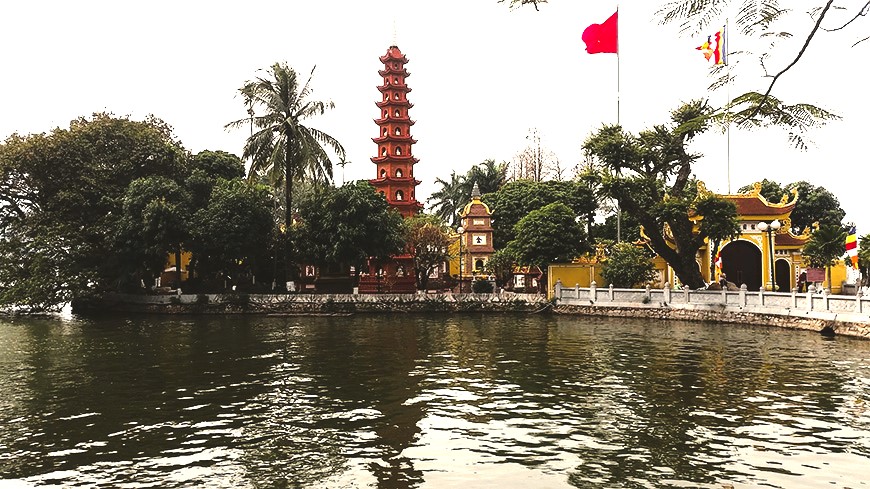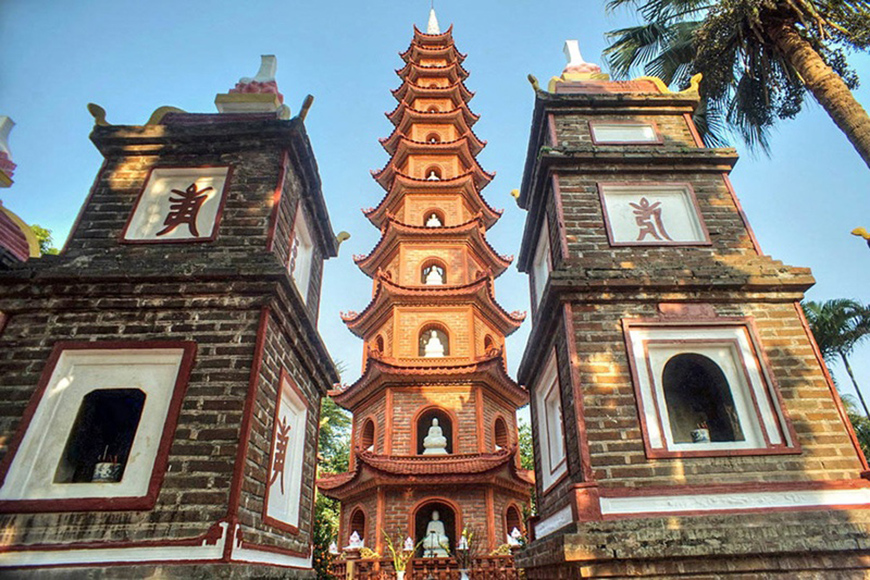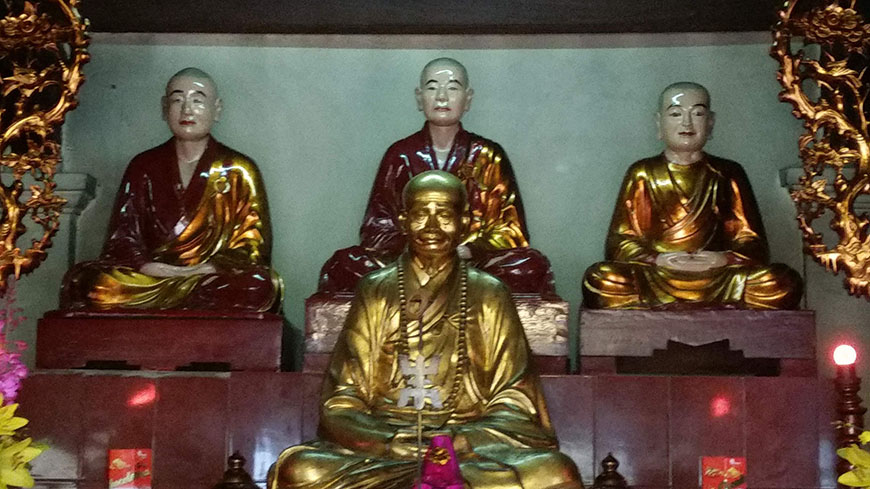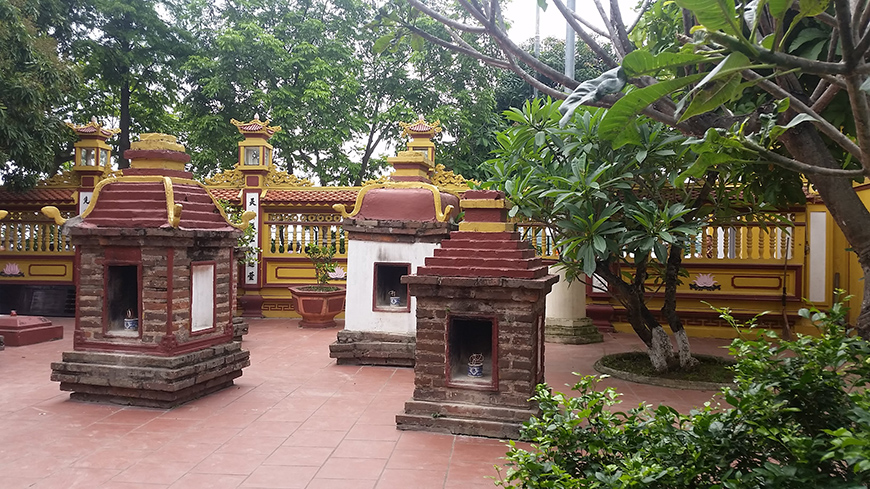Nestled on a peaceful island in West Lake in Hanoi,
Tran Quoc Pagoda stands proudly as a living witness to the
Buddhist history of Vietnam. Founded in the 6th century, this chùa (pagoda in Vietnamese) is a must-visit during any stay in the ancient capital - and a significant stop on our
one-day city tour of Hanoi.
A Unique Spiritual Heritage
Originally named Khai Quốc (National Foundation), the pagoda was built during the reign of Emperor Lý Nam Đế. Over the centuries, it has adapted to the whims of nature, relocating in 1615 to its current site to escape the silt of the Red River. Renamed Tran Quoc (National Defense), it has become a symbol of resilience and spiritual continuity.
But before we go further, let me explain the difference between a pagoda and a temple, a subtlety that few are aware of.

Tran Quoc pagoda, Hanoi's haven of tranquillity - Source : Mr Linh's Adventures Team
Nuances between chùa, đền, and miếu
In Vietnamese, several terms are used to refer to places of worship:
Chùa: This term refers to a Buddhist pagoda. It is where Buddhist faithful come to pray, meditate, and participate in religious ceremonies.
Đền: A đền is more associated with the worship of Taoist deities or ancestors. These places are often dedicated to national heroes, sea or mountain gods. It can be translated as temple.
Miếu: A miếu is a small temple, often dedicated to a saint or a guardian spirit. It can be associated with different religions, including Taoism, Confucianism, or ancestor worship.
With that point clarified, let's continue our visit.

Bao Thap, the 11-level lotus - Source : Collected
Architecture: a perfect balance between tradition and harmony
A space divided into three rooms
Tran Quoc Pagoda charms with its architecture, gracefully blending Chinese and Vietnamese influences. Its layout, consisting of three main rooms facing west, evokes a lotus flower blooming on the lake waters.
Tien Duong (Front Hall): This is the main entrance.
Thieu Huong (Incense Burner Room): This is where the faithful make their offerings.
Thuong Dien (Altar Room): This area is the spiritual heart of the pagoda, where Buddha statues are kept.
The 11-story stupa
Did you know? The stupa is a Buddhist funerary monument that contains relics of Buddha or saints. It symbolizes spiritual awakening and liberation from the cycle of rebirths. Here, the 11 levels of the stupa represent the 11 stages of enlightenment.
The stupa, also known as the 11-level lotus (Bao Tháp), is the most emblematic architectural element of the pagoda. Erected in 1998, it stands 15 meters tall and consists of 11 levels.
The whole structure is conical in shape to resemble a flame, symbolizing spiritual awakening. Each level houses a statue of Amitabha, culminating with a lotus flower made of precious stones, symbolizing enlightenment.
Tower Garden and Bodhi Tree
In the garden surrounding the pagoda, a Bodhi tree, a presumed descendant of the one under which Buddha attained enlightenment, stands. This "pagoda fig tree," offered by Indian President Rajendra Prasad in 1959, recalls the ancestral ties between Vietnam and India, the birthplace of Buddhism. The garden also houses several towers and stupas, ancient statues of important figures in Buddhism.

The many statues in the Front House - Source : Mr Linh's Adventures Team
Tran Quoc Pagoda : an immersive spiritual experience
Visitors are invited to participate in rituals of offering incense and food, creating an atmosphere filled with serenity. The veneration of the Mẫu goddesses, female deities associated with the forces of nature, adds a unique touch to the spiritual experience.
Practical Information
Address: Thanh Niên Road, Tây Hồ District, Hanoi
Opening Hours: Daily, 7:30 am - 11:30 am and 1:30 pm - 6:30 pm
Entry: Free
Access: Car, motorcycle, or bus (lines 33 and 50)

Tran Quoc's garden of towers - Source : Mr Linh's Adventures Team
In Conclusion
Tran Quoc Pagoda, a true haven of peace in the bustling Hanoi, offers a timeless escape. It invites contemplation and the discovery of an essential part of the Vietnamese soul.
A visit that promises to awaken your senses and spirit.